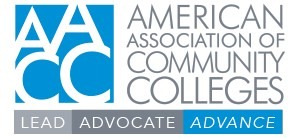By David Baime
The FY 18 omnibus appropriations bill passed by Congress March 23rd increases funding for nearly every program of significance to community colleges, many by substantial amounts.
The legislation, which funds every federal department, allocates the increased resources that Congress approved in a February budget deal. Congress has now enacted three budget deals since FY 2014 to fund federal programs at higher levels than the so-called sequester-level budget caps originally agreed to in 2011. The stunningly positive news contained in this bills reinforces the fact that broad budget decisions directly impact the programs on which community colleges and their students rely.
The current deal increased those caps by $63 billion, or 13%, for non-defense discretionary programs. Defense programs received slightly higher increases. The budget deal also increased the FY 19 non-discretionary budget caps by $68 billion. Since those budget caps were already set to increase by $13 billion, Congress will have $18 billion more to spend on these programs next year.
The legislation caps a tumultuous FY 18 budget process that required 5 temporary bills to keep the government open since the beginning of the fiscal year last October 1. Since the budget deal also provides additional funds for FY 19, many expect the appropriations process for the coming year to proceed more smoothly. However, stark partisan differences between the parties, and divisions within the Republican party in particular, may dash those expectations in an election year.
Department of Education
Overall, the Department of Education’s (ED) funding increased to $70.9 billion, $3.9 billion (5.8%) more than last year. The Department of Labor (DOL) saw a more modest 1.6% bump.
Pell Grants
For community colleges, the bill’s biggest highlight is a $175 increase in the Pell Grant maximum award, to $6,095. This goes well beyond the $100 increase contained in Senate LHHS legislation, and even beats inflation. Congress achieved this increase by utilizing a portion of the program’s current surplus, which was otherwise left intact. House and Senate LHHS bills had both originally rescinded approximately $3 billion from the Pell surplus to fund other priorities. With the additional funding provided by the budget deal, however, appropriators could fund other programs without tapping the Pell surplus.
Other ED Programs
Most other ED programs of interest to community colleges also fared very well, as outlined in the table below. Many Higher Education Act (HEA) programs, including the Supplemental Educational Opportunity Grants, Federal Work Study, Title III-A Strengthening Institutions programs, the Title III minority-serving institutions programs, and the Title V Hispanic-Serving Institutions program were increased by approximately 14%. The Child Care Access Means Parents in School program, proposed for elimination in the Trump administration’s original FY 18 budget, received the $50 million that the administration subsequently requested in its FY 18 budget addendum. This is a whopping 230% increase over its current $15 million funding level for a program that AACC highlighted in AACC’s advocacy. Perkins CTE state grants and adult basic education saw increases of 6.7% (to $1.193 billion) and 5.9% (to $631 million), respectively. The Trio programs and GEAR-UP received more modest increases of $60 million (6.3%) and $10 million (2.9%), respectively. HEA Title VI international education programs were level-funded.
DOL Workforce Training Programs
Most DOL workforce education programs experienced modest increases, with the exception of apprenticeship grants, which would increase from $95 million to $145 million. The three major formula grants authorized by the Workforce Innovation and Opportunity Act (WIOA) would rise a total of $80 million (2.9%), $30 million each for the low-income adult and youth funding streams, and $20 million for dislocated workers.
Unfortunately, all these additional new resources do not alleviate the reality that the DACA/DREAMER issue remains unaddressed by Congress. There were hopes earlier this year that this must-pass spending legislation would carry a deal on immigration. Despite a whirlwind of activity, however, no agreement was reached.
| Program | FY 17 Final | FY 18 Final | Dollar Increase | % Increase |
| Perkins CTE State Grants | 1,118 | 1,193 | 75 | 6.7 |
| Adult Basic Education | 596 | 631 | 35 | 5.9 |
| SEOG Grants | 733 | 840 | 107 | 14.6 |
| Federal Work Study | 990 | 1,130 | 140 | 14.1 |
| Strengthening Institutions | 87 | 99 | 12 | 14.3 |
| Tribally Controlled Colleges and Universities | 28 | 32 | 4 | 14.3 |
| Alaska Native & Native Hawaiian Serving Insts. | 14 | 16 | 2 | 14.3 |
| HBCUs | 245 | 280 | 35 | 14.3 |
| Predominately Black Institutions | 10 | 11 | 1 | 14.3 |
| Asian Amer. & Native American Pac. Islander | 3 | 4 | 1 | 14.3 |
| Native American Non-Tribal Institutions | 3 | 4 | 1 | 14.3 |
| Hispanic-Serving Institutions | 117 | 134 | 17 | 14.3 |
| International Education | 72 | 72 | 0 | 0 |
| TRIO | 950 | 1,010 | 60 | 6.3 |
| GEAR-UP | 340 | 350 | 10 | 2.9 |
| CCAMPIS | 15 | 50 | 35 | 230.4 |
| WIOA Adult | 816 | 846 | 30 | 3.7 |
| WIOA Dislocated Worker (incl. national reserve) | 1,242 | 1,262 | 20 | 1.6 |
| WIOA Youth | 873 | 903 | 30 | 3.4 |
| Apprenticeship Grants | 95 | 145 | 50 | 52.6 |
Dollar figures are in millions and rounded to nearest million.
